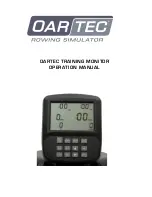
Effects and Effect Mode
Effects Overview
9-17
This means the compression can kick in before an attack transient arrives. In the
SoftKneeCompress and HardKneeCompress effects, delay is really only useful in feed-forward
configuration (FdbkComprs is “Out”). For other compressors, the delay can be useful in feedback
configuration (FdbkComprs is “In”). The range is 0 to 25 ms.
Ratio
is the amount of gain reduction imposed on the compressed signal, adjustable from 1.0:1
(no reduction) to 100:1, and Inf:1.
Threshold
is the level in dBFS (decibels relative to full scale) above which the signal begins to be
compressed. Adjustable from -79.0 to 0 dB.
MakeUpGain
allows additional output gain to compensate for gain reduction in the compressor.
It is essentially the same parameter as Out Gain, with which it is summed. The minimum is -79.0,
and the maximum summed gain (Make Out Gain) is +24.0 dB.
Expansion
Effects containing Expanders have these controls:
Atk
or
Exp Atk
(Attack), how fast the expander turns off when the input signal rises above the
threshold level, adjustable from 0.0 to 228.0 ms.
Rel
or
Exp Rel
(Release), how fast the expander turns back on after the signal drops below the
threshold level, adjustable from 0 to 3000 ms.
Ratio
or
Exp Ratio
, how much the gain is reduced below the expansion threshold, adjustable
from 1:1.0 (no expansion) to 1:17 (extreme downward expansion).
Threshold
or
Exp Threshold
, the level below which the signal is expanded, adjustable from
-79.0 to 0 dB.
In addition, the two-segment compressors with expander have separate
Ratio
and
Threshold
controls for each of the compression segments.
Multiband Compression
The Multiband Compression effect has
Attack
,
Release
,
Smooth
,
Signal Delay
,
Ratio
,
Threshold
, and
MakeUp Gain
parameters for each of the three bands (“Low”, “Mid”, and
“High”). In addition, it has:
Crossover1
and
Crossover2
. These set the frequencies which divide the three compression
frequency bands. The two parameters are interchangeable, so either may contain the higher
frequency value. The range is 16 to 25088 Hz, in increments of a semitone.
Gates
SC Input
lets you select which input channel(s) will control the sidechain, which is responsible
for opening and closing the gate. It can be set to L, R, or the average of the two channels,
(L+R)/2. You can use this, if you arrange the signal paths and pan controls appropriately, to gate
one mono signal with a different mono signal.
Gate Time
is the time that the gate will stay open after the sidechain signal reaches the
Threshold. Its range is 0 to 3000ms.
Ducking
reverses the action of the gate. Normally this if set to “Off”, and the gate opens when
the input signal rises above the threshold. But when this is “On”, the gate
closes
when the input
signal rises above the threshold.
















































